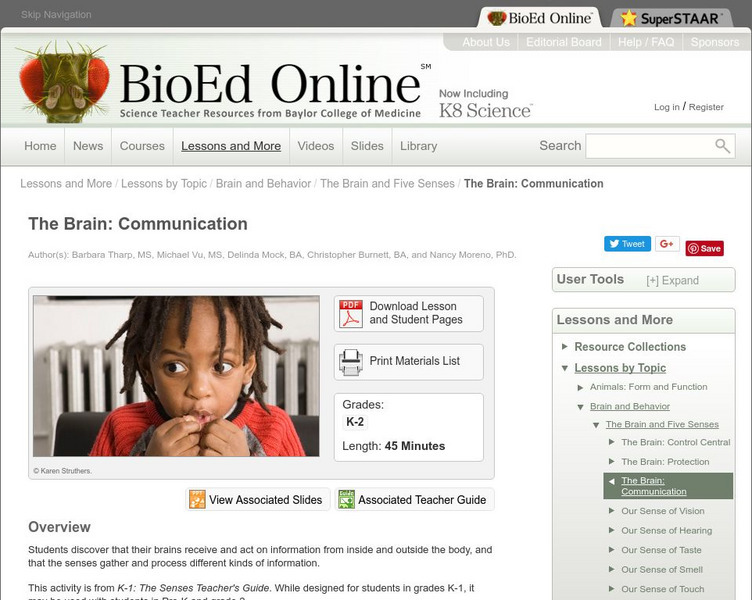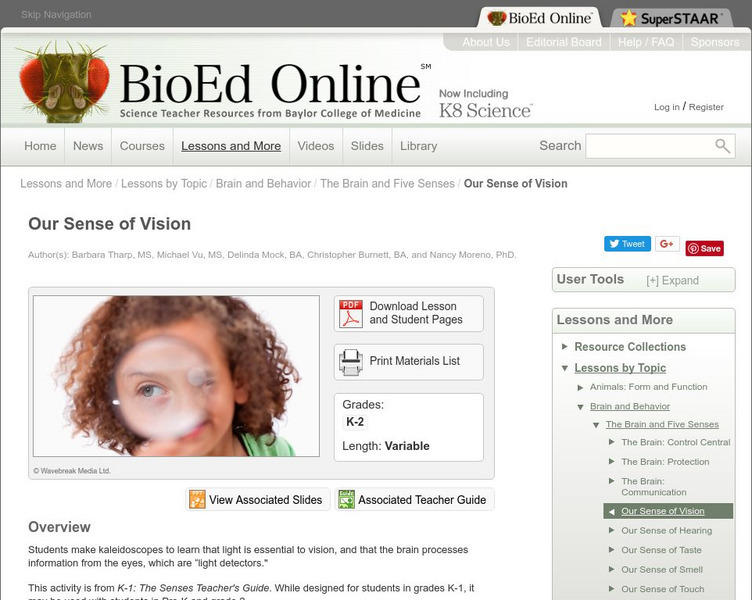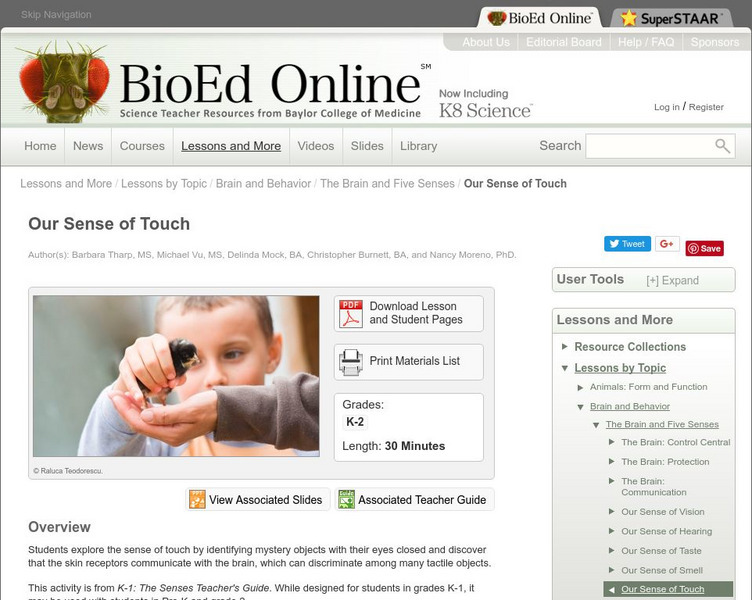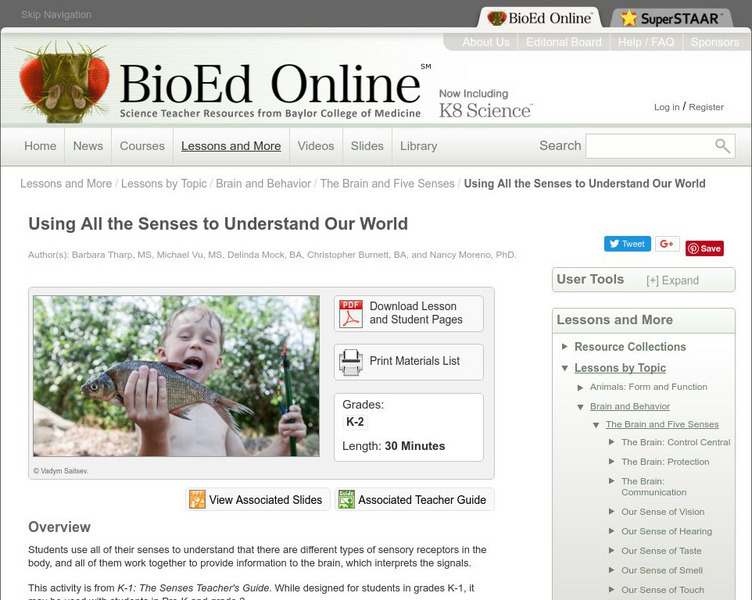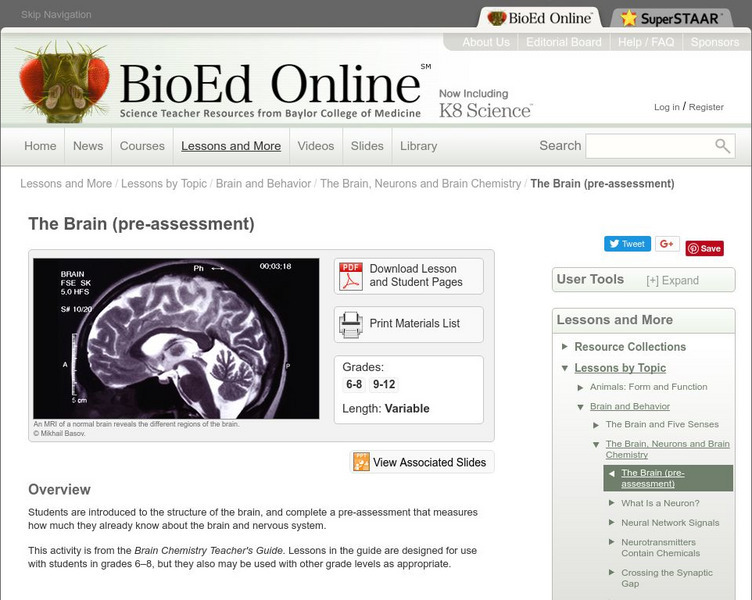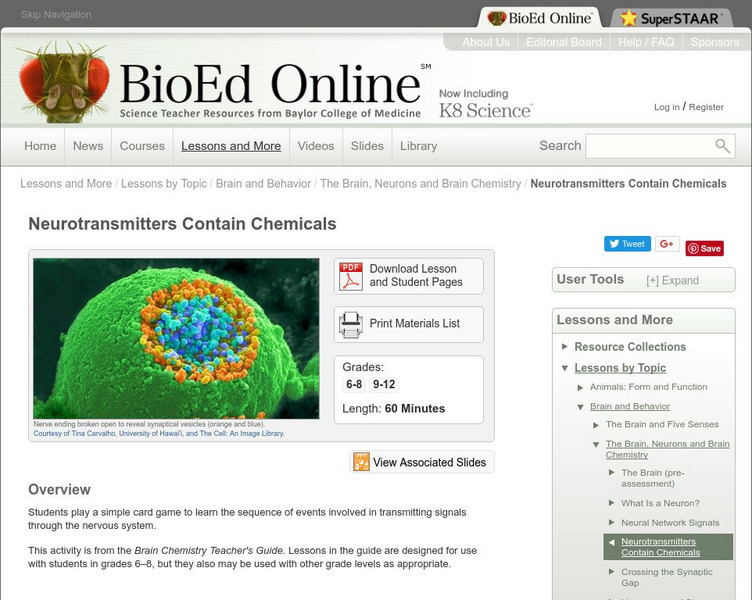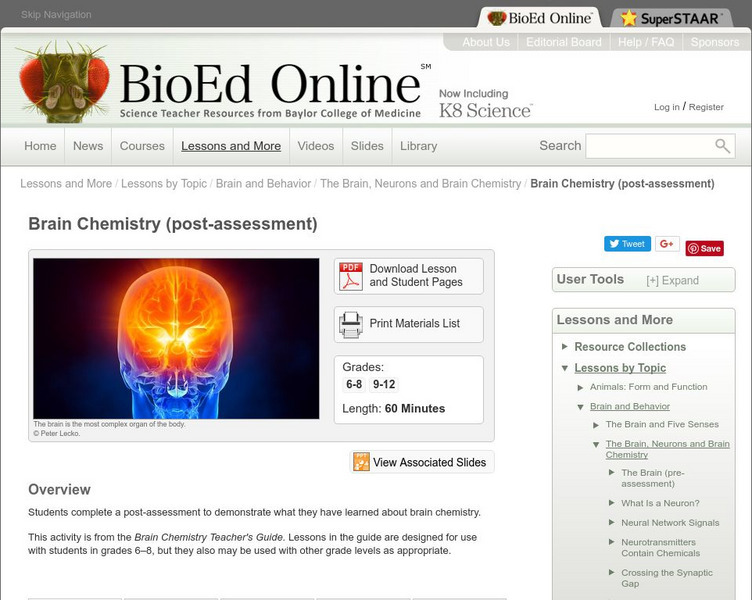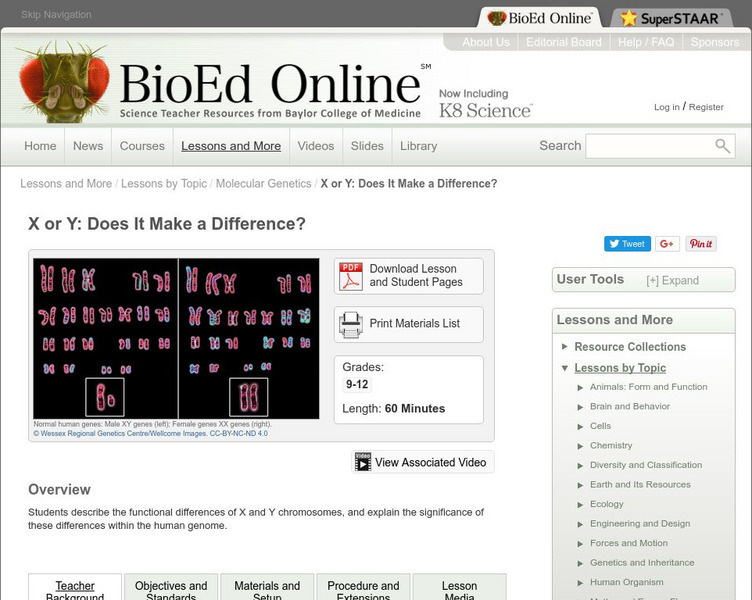BioEd Online
Bio Ed Online: How Can We Find Out What Is in Water?
In this lesson students use simple paper chromatography to investigate a mystery liquid. Student sheets are provided in English and in Spanish.
BioEd Online
Bio Ed Online: Why Is Water So Important?
In this post assessment activity students review points covered in the attached unit and reach conclusions regarding the importance of water to human health. Student sheets are provided in English and in Spanish.
BioEd Online
Bio Ed Online: What Is One Part Per Million Solution?
Substances dissolved in water can be present in very tiny amounts that are not visible to the eye. in this lesson students make a solution of food coloring with a concentration of one part per million.
BioEd Online
Bio Ed Online: Can Nutrients in Water Cause Harm?
Many different kinds of organisms live in water. Excess nutrients can cause over-abundant growth of some organisms living in water and non-point source pollution is a major threat to water supplies in the United States. In this lesson...
BioEd Online
Bio Ed Online: Water
The Science of Water Teacher's Guide provides a number of inquiry-based activities for grades 3-5 (although it can be expanded for other grades). The guide contains science lessons that enable learners to explore water, behavior of...
BioEd Online
Bio Ed Online: The Brain: Protection
What protects the brain? Why does the brain need to be protected? In this instructional activity young scholars will learn about the fragility of the brain and that it is enclosed by the skull, which protects the brain and forms the...
BioEd Online
Bio Ed Online: The Brain: Communication
How does information from different parts of the body reach the brain? For this lesson students discover that their brains receive and act on information from inside and outside the body, and that the senses gather and process different...
BioEd Online
Bio Ed Online: The Brain: Control Central
What do you know about the brain? In this early learners instructional activity, students will explore the basic functions and characteristics of the brain and skull, and also learn about three major structures in the brain: the...
BioEd Online
Bio Ed Online: Our Sense of Vision
Which parts of the body are involved in vision (seeing)? Is light important for vision? In this lesson students make kaleidoscopes to learn that light is essential to vision, and that the brain processes information from the eyes, which...
BioEd Online
Bio Ed Online: Our Sense of Hearing
What causes sound? How do our ears detect sound? How do our brains recognize sound? In this lesson learners investigate hearing and discover that sensory receptors in the ears collect sound information and transmit it to the brain, and...
BioEd Online
Bio Ed Online: Our Sense of Taste
What are the basic tastes? Where is information about taste detected in the body? In this lesson learners taste four mystery substances and learn that the tongue is covered with taste buds, which contain taste receptors that communicate...
BioEd Online
Bio Ed Online: Our Sense of Smell
How does our sense of smell work? In this lesson learners use four different flavors of dry soft drink mix to investigate the sense of smell, and learn that the nose can detect very small particles in air, and transmit the information to...
BioEd Online
Bio Ed Online: Our Sense of Touch
How does the sense of touch work? Is the sense of touch more sensitive in some parts of the body, such as fingertips, than in others? In this lesson learners explore the sense of touch by identifying mystery objects with their eyes...
BioEd Online
Bio Ed Online: Using All Our Sources to Understand Our World
How do we use our senses to understand our surroundings? What types of input are provided by the different senses? In this instructional activity students use all of their senses to understand that there are different types of sensory...
BioEd Online
Bio Ed Online: The Brain: Pre Assessment
The brain has unique physical characteristics and it is specialized into many different areas, each with a different job. Brain functions and abilities develop over time. Assess student's knowledge of the structure of the brain by having...
BioEd Online
Bio Ed Online: What Is a Neuron?
Messages within the brain and the rest of the nervous system are sent very rapidly. These messages are conducted by cells called neurons. Neurons are specialized to receive and transmit message and neurons are connected in networks. In...
BioEd Online
Bio Ed Online: Neural Network Signals
Nervous system messages are sent as electrical signals along the length of axons and dissolved salts are important for electrical signaling in cells. In this lesson plan learners are introduced to this concept by creating an electrical...
BioEd Online
Bio Ed Online: Neurotransmitters Contain Chemicals
Nervous system signals are transmitted electrically along individual neurons, but neurons are separated from each other by a tiny gap. Chemical messengers called neurotransmitters cross the gap between neurons. Neurotransmitters fit into...
BioEd Online
Bio Ed Online: Crossing the Synaptic Gap
Neurotransmitters can either stimulate the next neuron to send a signal or inhibit that neuron from sending a signal. Certain chemicals change the way signals are sent and received. In this lesson young scholars will understand this...
BioEd Online
Bio Ed Online: Food for the Brain
The brain needs many different kinds of raw materials from food and ecommended serving sizes are often smaller than the size actually served or the amounts people eat. In this lesson learners are introduced to this concept by dissecting...
BioEd Online
Bio Ed Online: Brain Chemistry Post Assessment
The human brain is complex. Messages within the brain and the rest of the nervous system are conducted by cells called neurons. Drugs and other substances can interfere with or modify the transmission of messages between neurons. In this...
BioEd Online
Bio Ed Online: Muscle Fibers
Muscles are made of fibers within fibers and the structure of muscles makes them strong. In this instructional activity students learn about muscle structure by comparing yarn and cooked meat.
BioEd Online
Bio Ed Online: Fungus Among Us
Fungi grow from spores and fungi spores are present almost everywhere. Molds and other fungi grow in damp places. In this lesson young scholars will grow and observe bread mold and other kinds of common fungi. Student sheets are provided...
BioEd Online
Bio Ed Online: X or Y: Does It Make a Difference?
In the following instructional activity students describe the functional differences of X and Y chromosomes, and explain the significance of these differences within the human genome.








